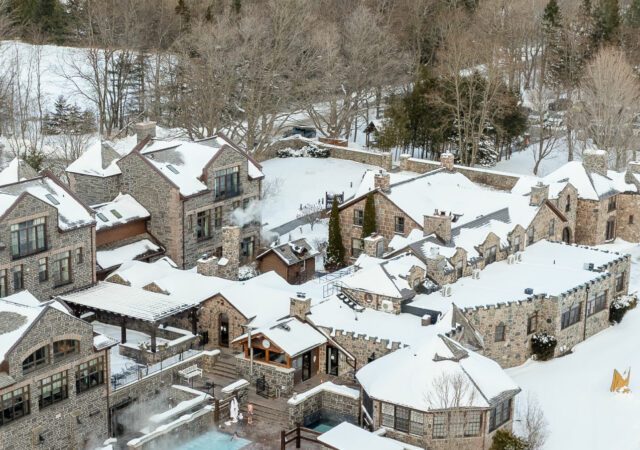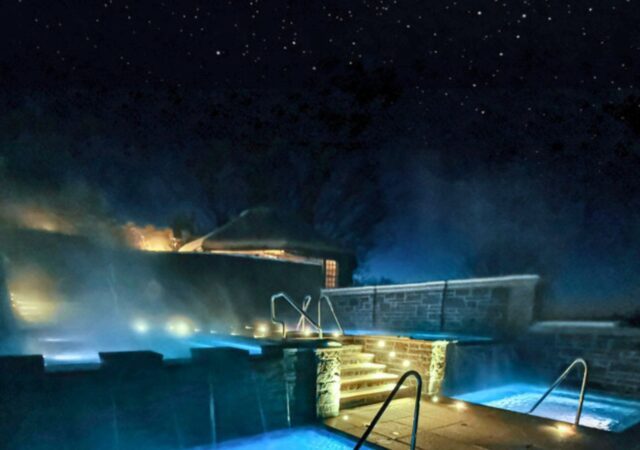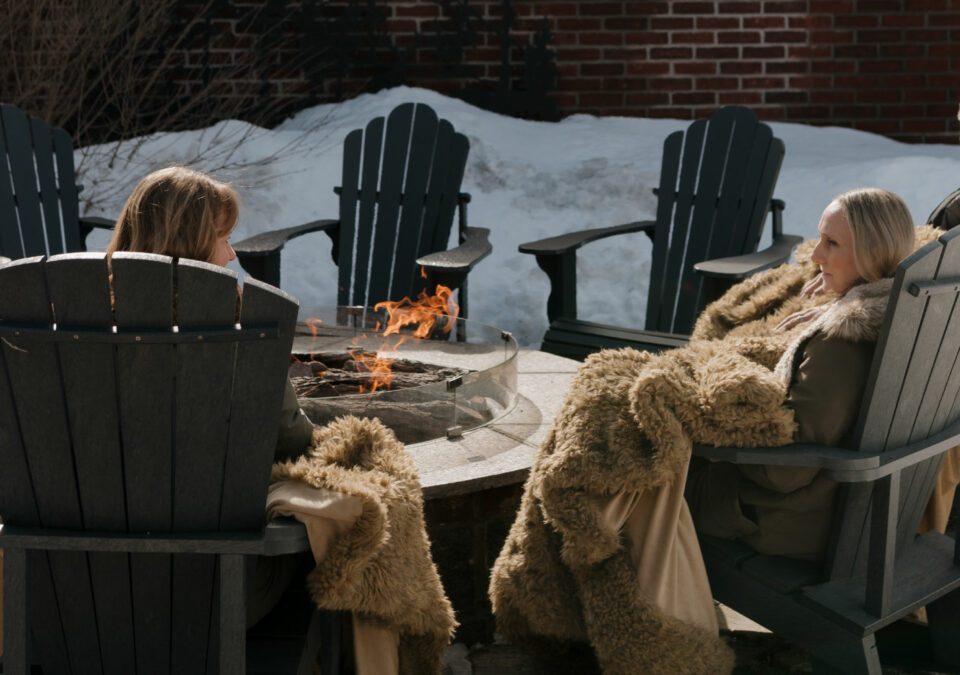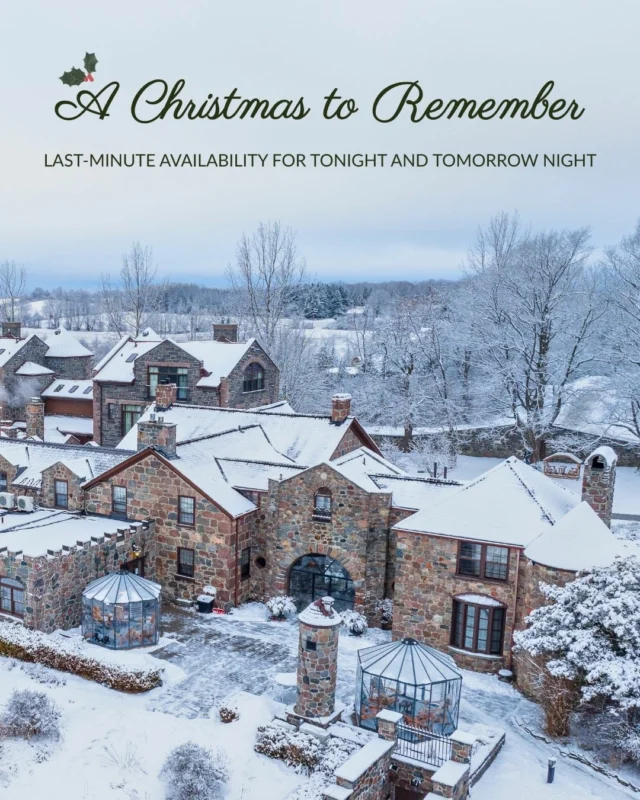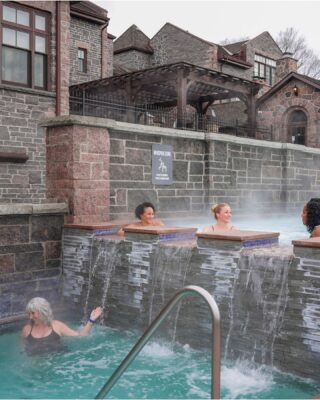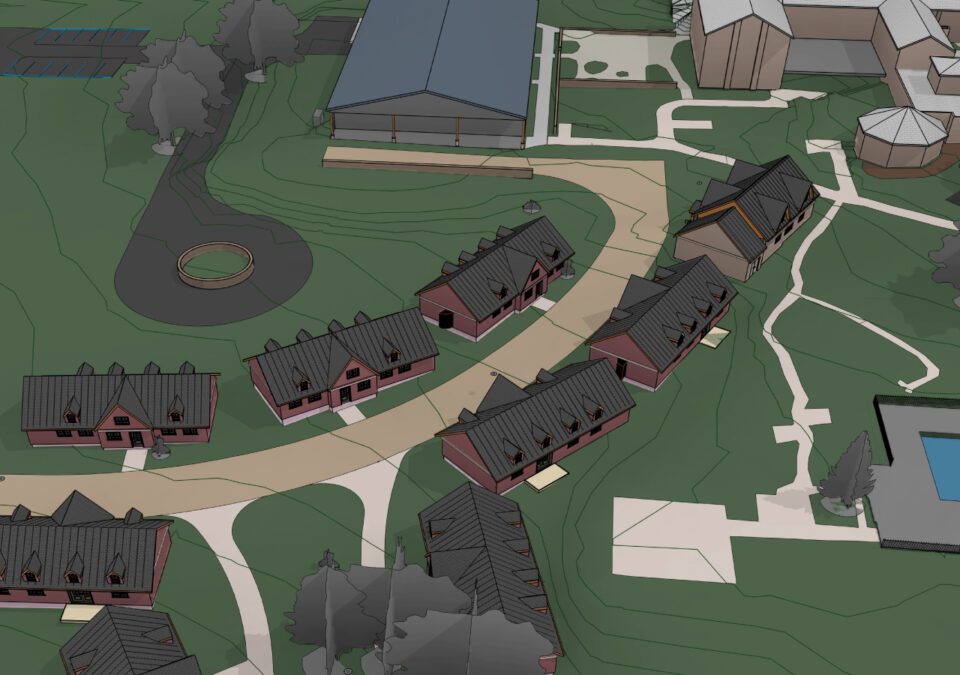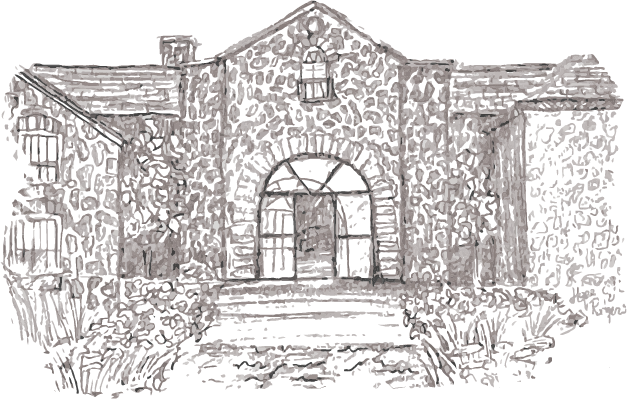
Ste. Anne’s Spa has always been a place where the spirit of family and community thrives.
Originally constructed in 1858, Ste. Anne’s Spa began its legacy as a heritage fieldstone country castle and estate. Over the years, it served as a cherished residence for several notable families—the Masseys, Jaynes, Keelers, and Blaffers—before being lovingly restored by its current owners, the Corcorans. Throughout its storied history, one constant has endured: a sense of familial warmth and hospitality that continues to define Ste. Anne’s Spa today.
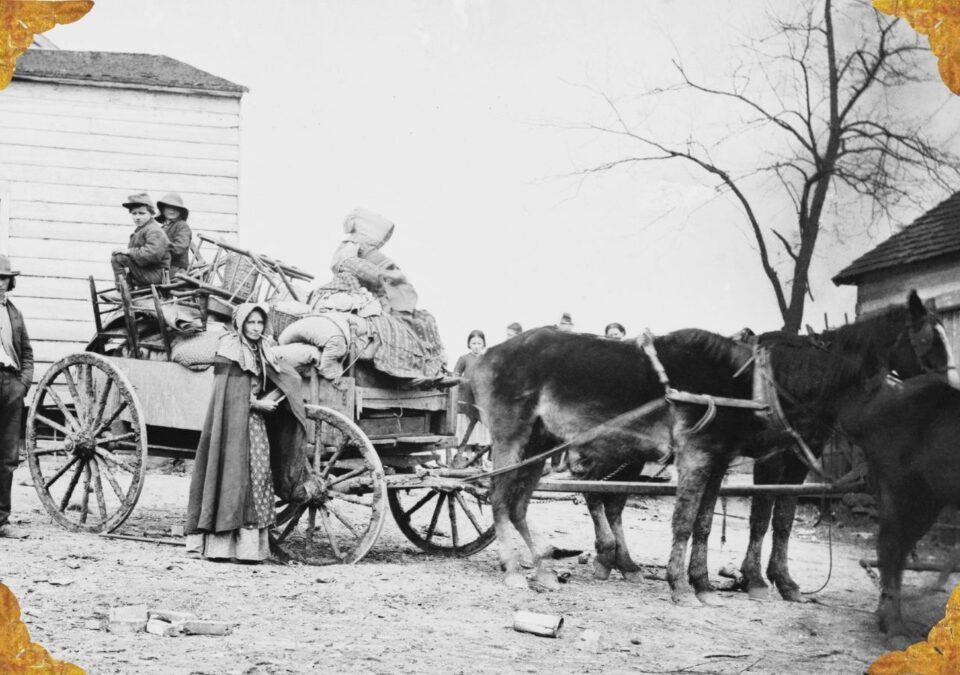
Daniel Massey, born in 1766, descended from early American settlers Jeffrey and Ellen Massey. He migrated to Canada after living in New Hampshire, Vermont, and New York State, driven by the opportunity to acquire affordable land rather than ideological reasons speculated by some historians. Daniel and his family crossed Lake Ontario by schooner and settled near Grafton, then a small settlement known as Grover’s Tavern. They were among the earliest settlers in the area, which had a population of just 312 by 1803. Daniel’s son Jonathan expanded their holdings in the early 19th century, acquiring 500 acres including the present-day site of Ste. Anne’s Spa, located across from the original Massey homestead.
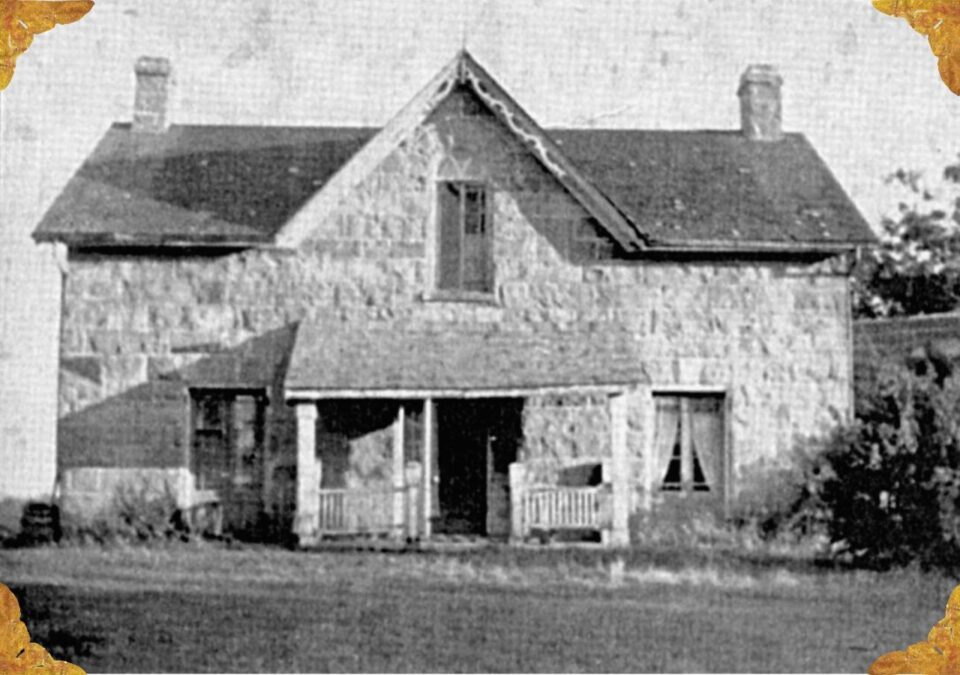
The centre of the building is an impressive stone house built in 1858 by Samuel Massey, the grandson of the early pioneer couple. He chose an ideal location for his home—on a plateau overlooking miles of rolling countryside with Lake Ontario on the horizon. Samuel and Mary’s home, “Sunnyside,” was built in the Georgian style, known for its balanced proportions, and featured a dramatic Regency-style site on a plateau with a breathtaking view. The house, made from locally quarried rose quartz and pink limestone, had 2-foot-thick walls, a gabled roof for extra headroom, balanced chimneys, double-hung windows, a centrally located front doorway with a square transom, and symmetrical French doors and shutters. Years later, it was passed down to his son Edward Massey.
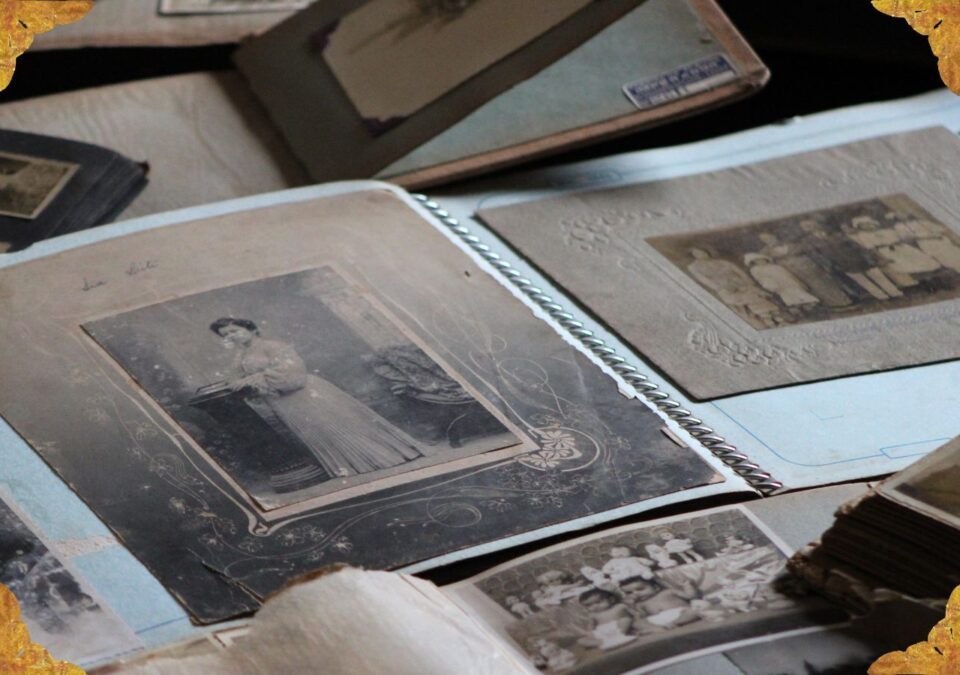
The mortgages on Edward Massey’s farm were foreclosed in 1890, leading Thomas Hoskins to assume ownership. Edward and his family likely remained in their home as tenants or moved in with Samuel during this period. Edward assisted in managing his father’s farm until relocating to Rochester in 1904. Mary Masters Massey passed away in July 1890. Samuel lived at Sunnyside with his daughters Elizabeth and Lucy, and grandson Edward Gram until his death in February 1899. Samuel, Mary, and their daughter Susan are buried at Academy Hill Cemetery.
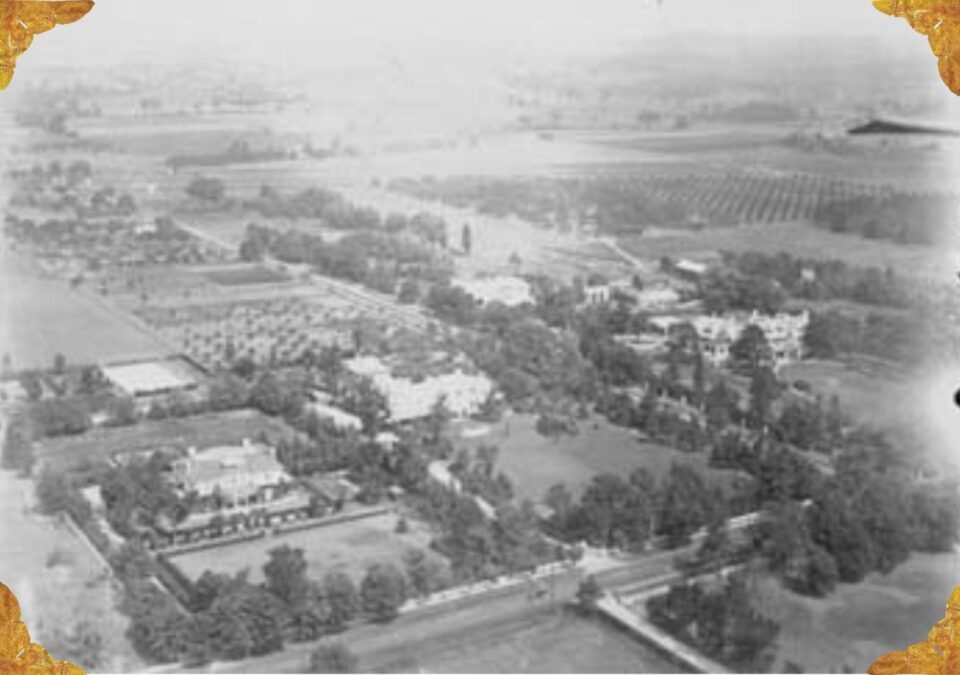
In 1901, Simon Jayne purchased Edward Massey’s former property and married Nora L. Tinney. They built a red-brick farmhouse on Lot 23 and later acquired Sunnyside in 1907. Simon sold part of his land in 1917 and moved near Cobourg until Nora’s death in 1935. Afterward, he returned to his family’s home with his siblings. Simon sold Sunnyside to William Keeler in 1919.

William Keeler, a descendant of United Empire Loyalists, bought Sunnyside in 1919 and farmed with his wife Elizabeth. They were devoted members of their church, known for hosting Baptist ministers-in-training. Their son Alvin became a Baptist minister, while another son, Bill, helped manage the farm and later converted part of the house into an apartment for his family. Despite electricity arriving in Grafton in 1925, farms outside the village lacked power for years. The Great Depression starting in 1929 brought hardship, forcing many farmers to barter labor for property taxes. Even as the Depression eased and World War II began in 1939, local farms and businesses struggled to recover.
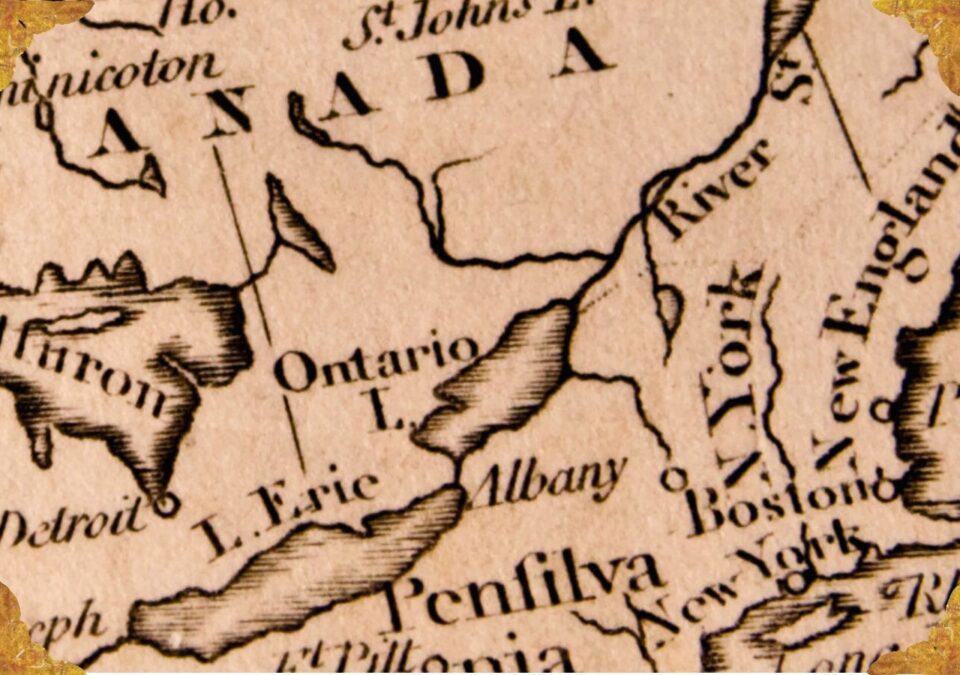
Robert Lee Blaffer, a prominent figure in Houston’s oil industry, amassed wealth through his pioneering work in oil drilling and co-founding Humble Oil, which later merged into Exxon. His wife, Sarah Campbell Blaffer, was the daughter of William Thomas Campbell, an oil entrepreneur involved in founding Texaco. The Blaffers, parents to John, Jane, Cecil, and Joyce, typically vacationed in Europe but turned to Canada in 1939 due to World War II. Enchanted by the Keeler farm’s scenic beauty, Mrs. Blaffer purchased the property and retained the Keelers as caretakers for a period.
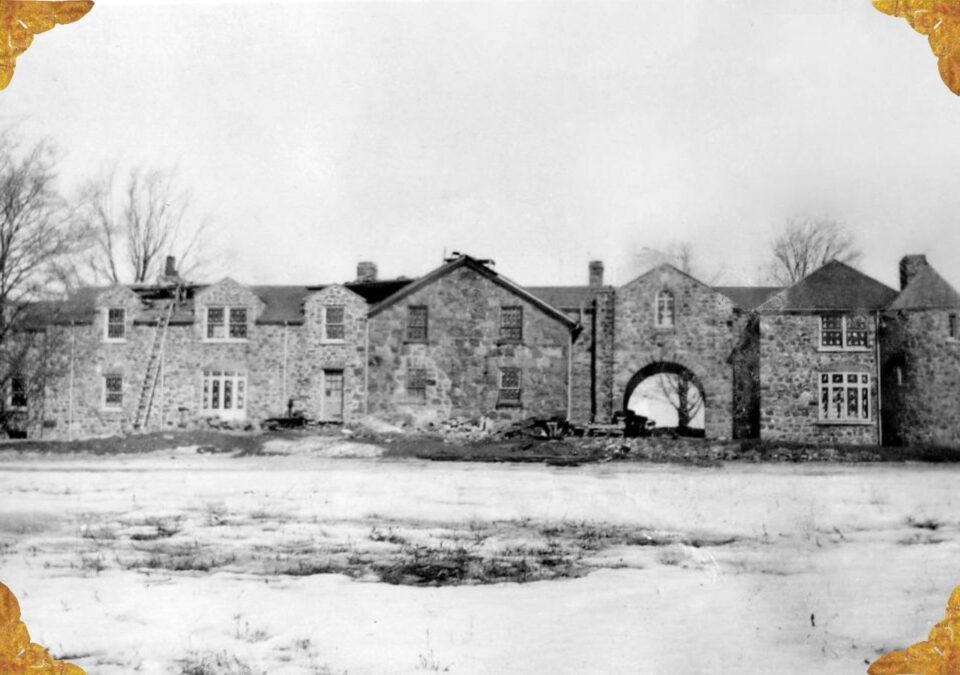
In fall 1939, Mrs. Blaffer began transforming Samuel Massey’s stone house into a summer retreat inspired by English Cotswold cottages. She enlisted architect Mr. Abbott and Scottish stonemason Mr. Skillen to create spacious additions matching the original’s pink hue. Local farmers contributed stones, including those from abandoned buildings and the old Academy Hill School. The project, nicknamed “Grafton Castle,” was widely discussed locally. Renamed Ste. Anne’s by the Blaffers, honoring Canada’s patron saint, the home was completed amidst community awe. Mrs. Blaffer oversaw construction through the winter of 1939-40, enjoying visits in a horse-drawn sleigh.
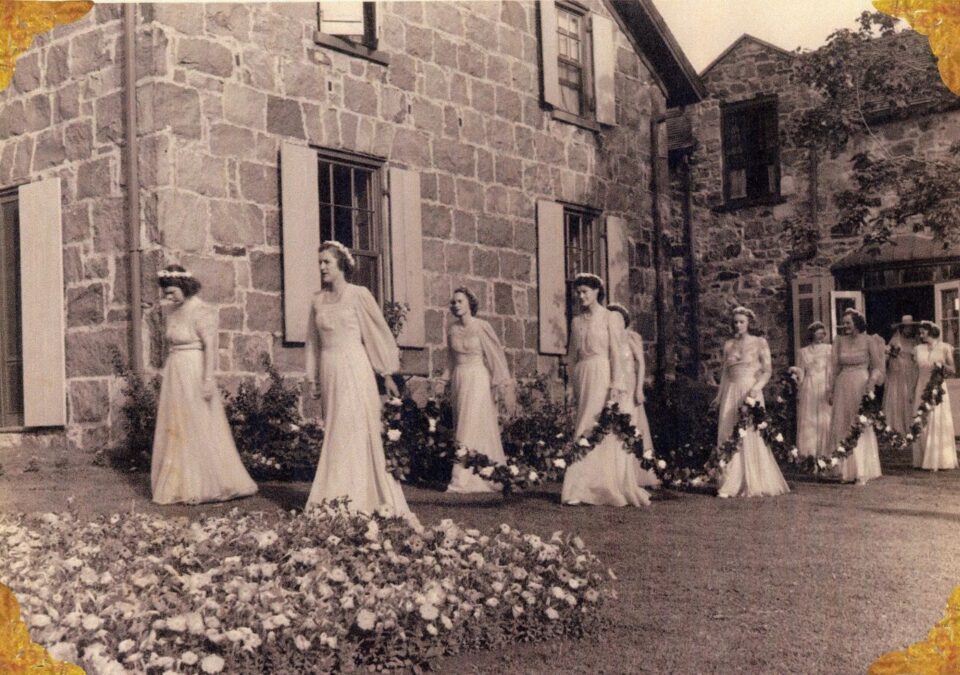
In 1941, Mr. Blaffer retired as preparations for daughter Jane’s marriage to Kenneth Owen of Indiana began at Ste. Anne’s. An addition, now the East Suite, was built for the occasion, featuring a fieldstone floor for dancing. Mrs. Blaffer meticulously timed buckwheat planting so the fields were snow white on the wedding day, where Reverend Nind officiated an outdoor ceremony amidst petunia-hued bridesmaids. Royal Norwegian Air Force members, exiled during the war, honored the couple with a “V” formation flyover, dropping goodwill messages. Neighbors like Mr. Waldie gifted handmade treasures, such as an enduring eiderdown quilt.
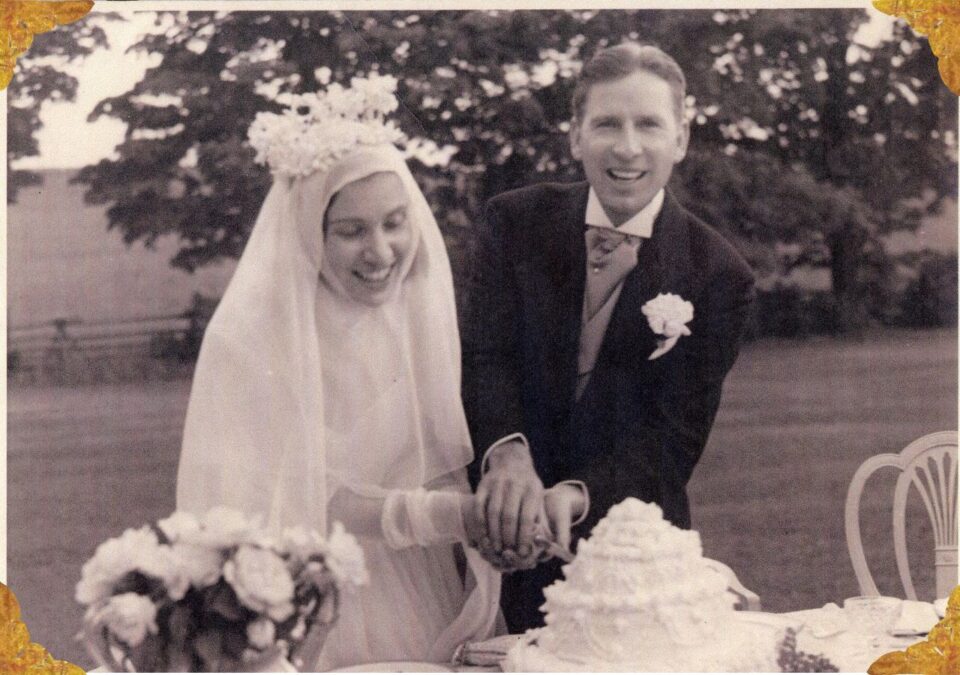
In July 1975, a few months after her mother’s death, Jane Owen visited Ste. Anne’s for the first time in eight years. She spoke about many happy memories of her family’s summer house and hoped to revive Ste. Anne’s for family visits, but her focus shifted to restoring New Harmony, Indiana. Ste. Anne’s stood empty for six more years. Today, the Jane Owen Room, named in her honour, is located on the north side of the original building, overlooking both the north tower and the remains of the old maple tree.
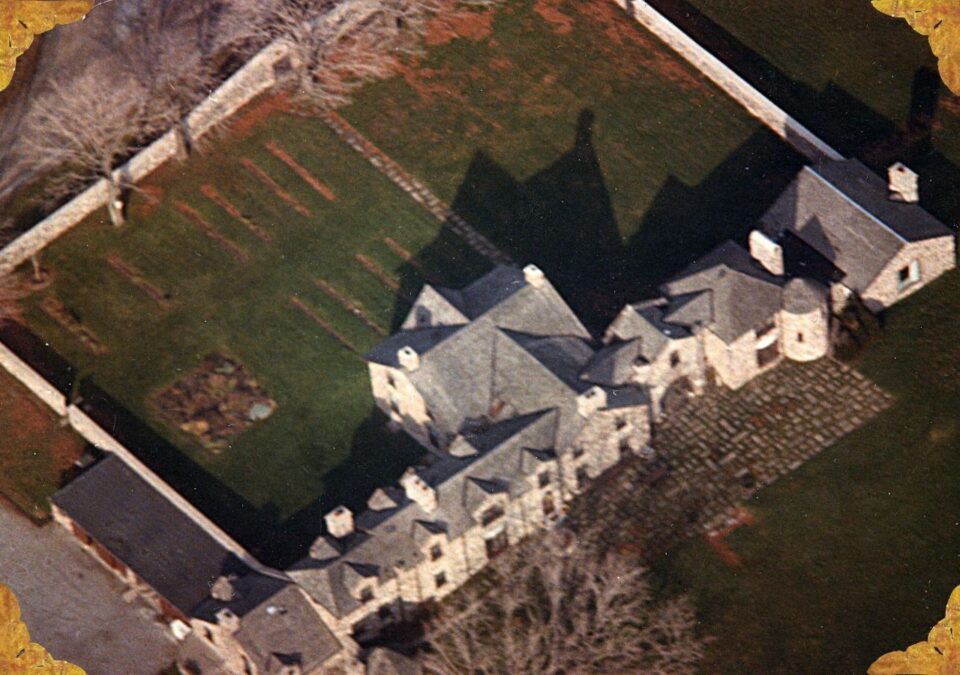
In the spring of 1981, Carl Corcoran was intrigued by a newspaper ad offering a castle for sale in the Northumberland Hills. His wife, Nan, toured the old stone house with Harold Winter but was initially deterred by its mouldy, dilapidated state. Despite this, the Corcorans, busy with their seven children and Charolais cattle farm, were smitten and visited the property multiple times. Carl envisioned the family working on its restoration together, while Nan felt drawn by its nurturing spirit and association with healing. Their friend, Jay Rawlings, later confirmed Nan’s impression with a prophecy “I have chosen this beautiful garden, where I will send many people to be healed.” In June 1981, the Corcorans bought Ste. Anne’s.
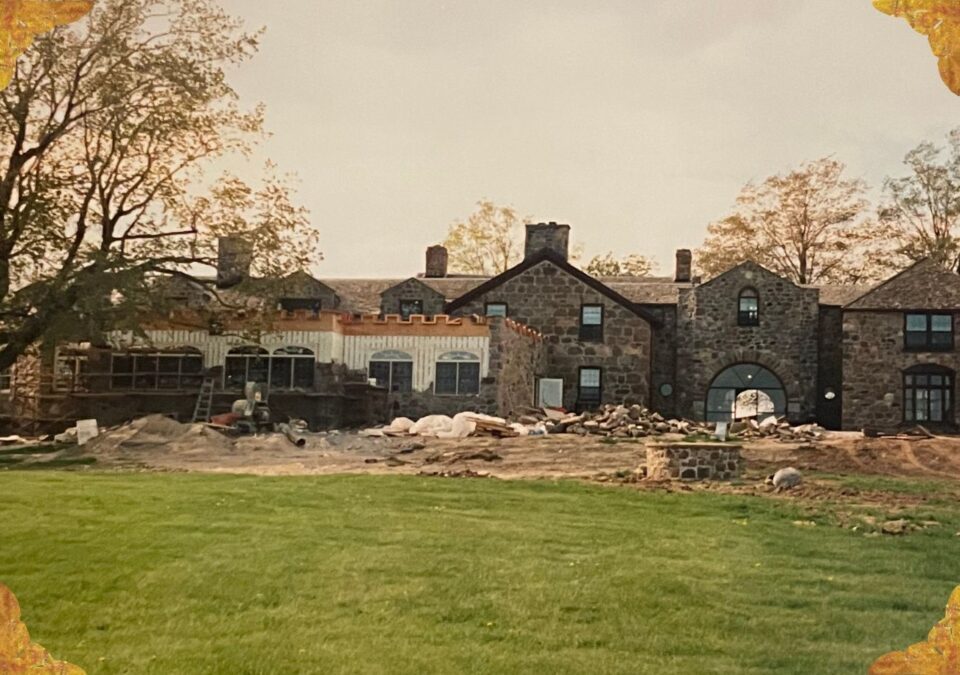
The Corcoran family soon realized Ste. Anne’s needed extensive restoration due to years of damage. While the oldest section from 1858 was in good shape, the rest required rebuilding. For two years, a crew of sixteen, nine of whom lived on-site, worked on the renovation. Jim Corcoran, who had recently left York University and his role as a school trustee, oversaw the project. The family moved to Ste. Anne’s, with their furniture stored in the sitting room and sleeping on mattresses on bare floors while bats flew overhead. Each morning, Nan cooked for her family and the workers amid the chaos, and Carl often left for his office in Toronto covered in plaster dust.
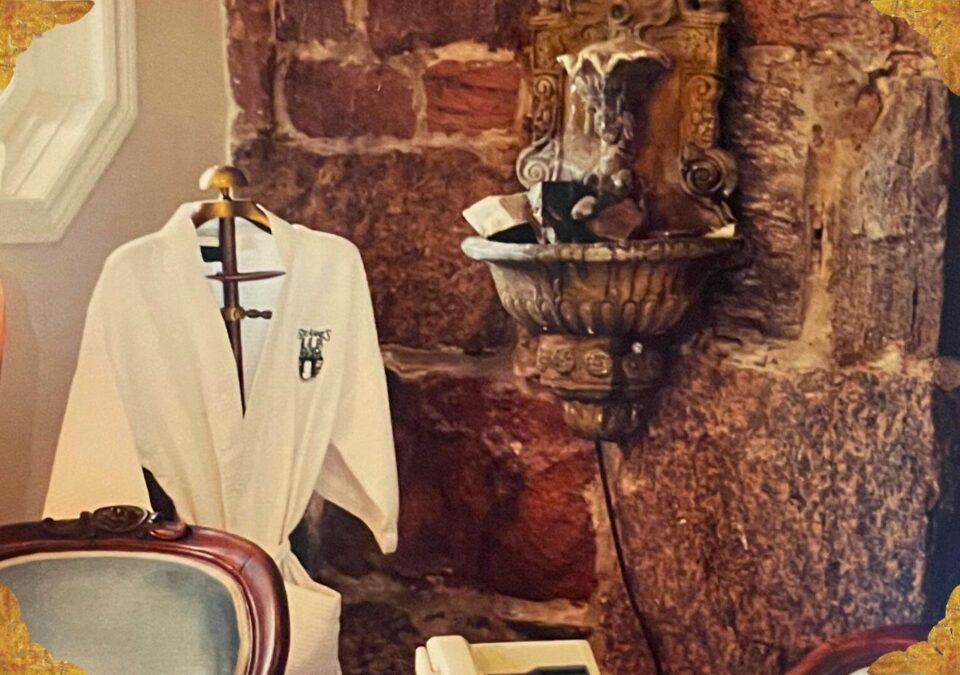
Carl Corcoran says the idea to start a bed and breakfast at Ste. Anne’s emerged from the community’s interest in the renovations. Local residents frequently visited, bringing friends and even asking to stay overnight. As renovations neared completion, Nan furnished the house with antiques from local shops and auctions, blending various styles to reflect the home’s historical evolution. In May 1983, renovations concluded just in time for John and Nancy’s wedding reception at Ste. Anne’s. Shortly after, Nan and Nancy began operating a B&B, and with their daughter Cindy’s inspiration as a newly trained Registered Massage Therapist, they soon incorporated spa treatments into their offerings.
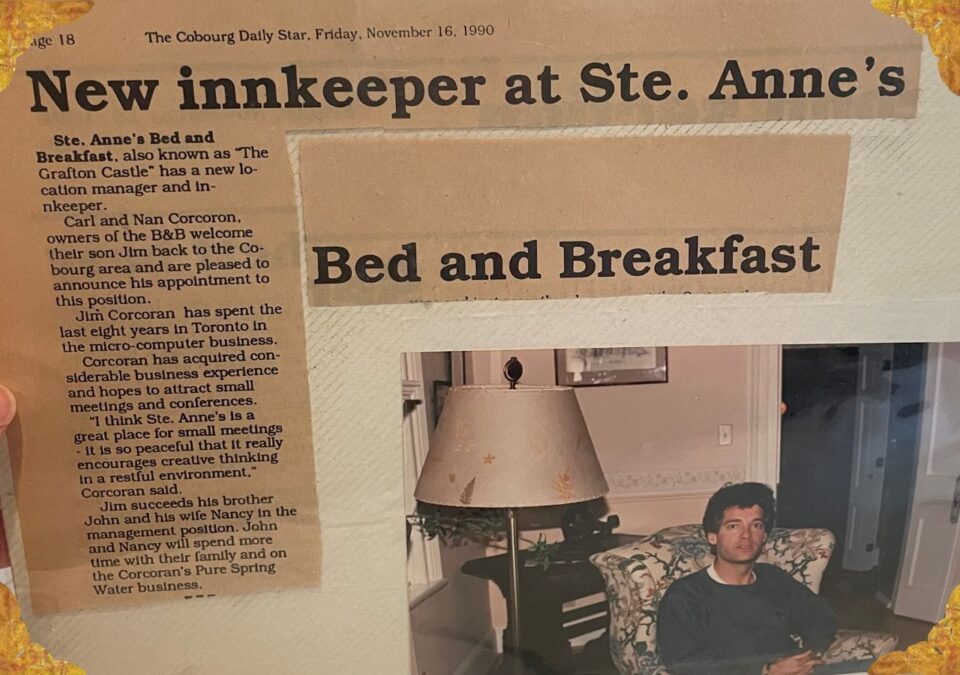
By 1990, Carl considered selling or leasing the stone house as the B&B thrived. Nancy needed more family time with their two children, and John wanted to focus on their water bottling business. In 1990, Jim, working in Toronto for Computerland, felt compelled to return to Ste. Anne’s Inn despite Carl’s initial reluctance. Persuaded by Jim’s business plan, Carl let him take over. Jim expanded operations, converting family living quarters into guest rooms and increasing accommodations from seven to ten rooms. He invited his sister Anne to join, and she enhanced the inn’s decor, creating a cozy, country ambiance. Together, they managed the growing business, adapting dining arrangements and eventually constructing an addition to streamline guest flow and enhance efficiency.
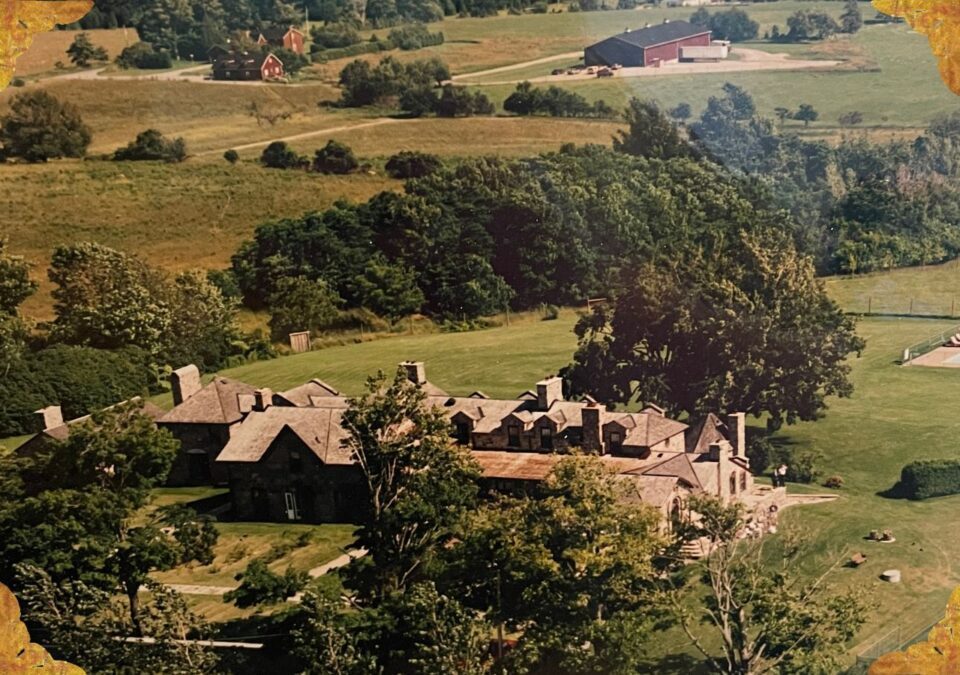
Despite financial uncertainties, Jim began expanding Ste. Anne’s Inn to accommodate growing business. He transformed the dining room into the front desk and added structures that blended seamlessly with the original building. Jim actively marketed the inn’s offerings and played a key role in establishing the Innkeeper’s Association of Ontario, serving as its first president for two years. He introduced innovative marketing initiatives, including artist-in-residence workshops and temporary spa treatments led by his sister Cindy, a massage therapist. Recognizing the positive impact on guest satisfaction, Jim made spa services an integral part of the Ste. Anne’s experience.
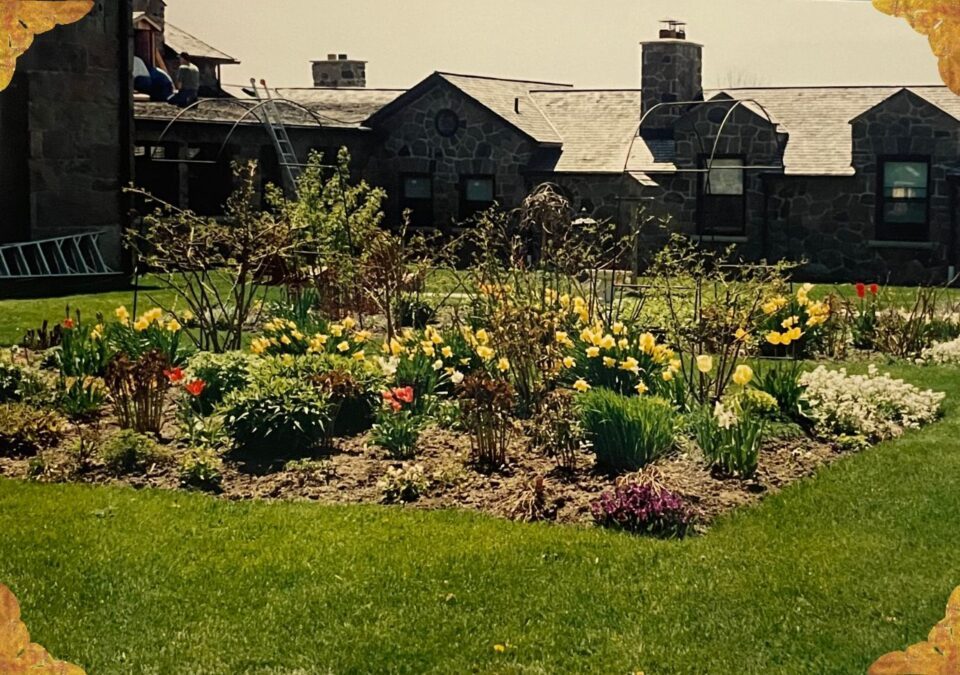
In 1996, the fitness pavilion was named after Nan’s father, Dr. William Priddle, a respected internal and geriatric medicine specialist who frequented Ste. Anne’s with his wife, Agatha. Agatha first encountered the castle’s reputed ghosts, a sight later confirmed by others. During renovations, the Massey family’s stone well top was repurposed as a “wishing well” on the south lawn, and parts of the original foundation were unearthed. This led Jim to enlarge the basement crawl space for additional treatment rooms. The former Blaffer dining room, with its black and white marble floor, was converted into a gift shop.
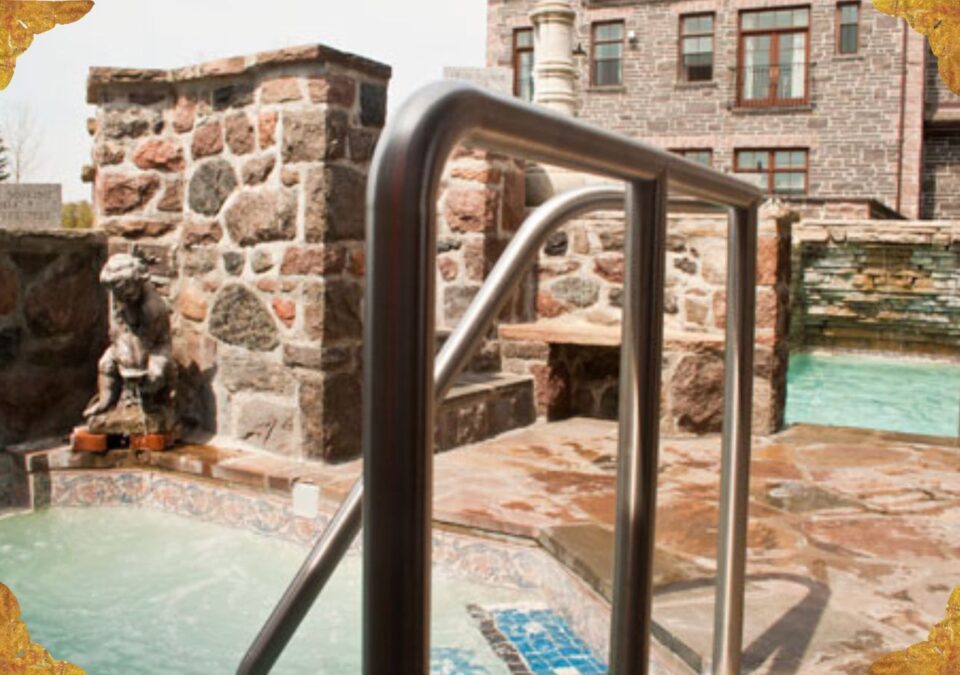
In 1998, Ste. Anne’s Inn underwent another significant expansion with the addition of a stone grotto on its west side. This new feature included a luxurious hot tub, a refreshing plunge pool, and a spacious lap pool. The grotto, nestled amidst the serene surroundings of the inn, quickly became a favourite among guests seeking relaxation and rejuvenation. Its natural stone construction complemented the rustic charm of Ste. Anne’s, offering a tranquil oasis where visitors could unwind and enjoy the therapeutic benefits of hydrotherapy. The addition of the grotto further enhanced Ste. Anne’s reputation as not only a premier bed and breakfast but also a destination for wellness and pampering.
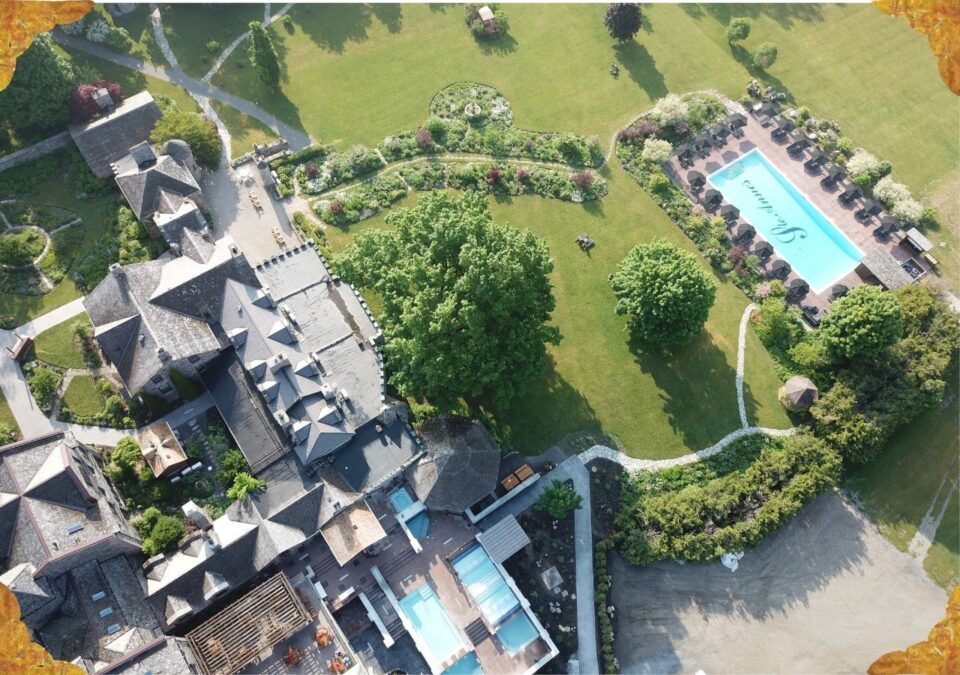
The historic stone building at Ste. Anne’s continues its remarkable evolution from a homestead to a renowned destination spa and now to an ambitious world-class resort under Jim’s visionary plans. Future expansions include individual, self-contained accommodations across the expansive 500-acre property, positioning Ste. Anne’s as a distinctive complex in North America with accommodations expanding to 100+ rooms. Throughout its journey, generations of dedicated families, drawn by its allure, have shaped its destiny—from the visionary Mrs. Blaffer who saw a castle in its potential, to the Corcoran family who transformed it into an inn and spa. This land has long held a mystical allure, sensed by early settlers and later affirmed by prophecies and the healing powers attributed to its underground waters, marking it as a sacred place well before its modern incarnation as Ste. Anne’s.


